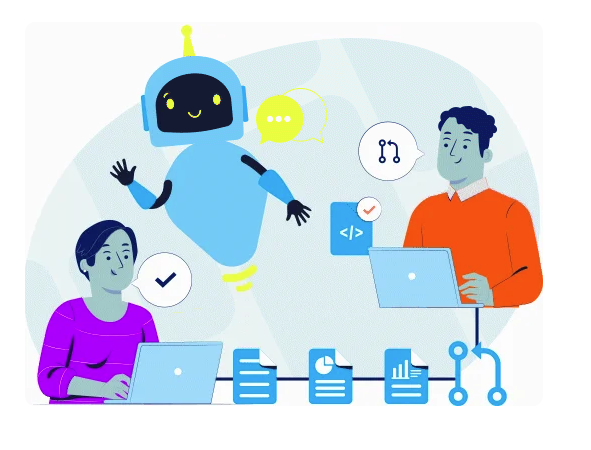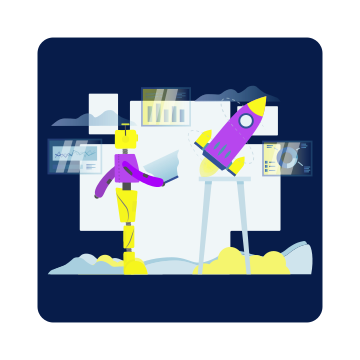What Are the Responsibilities of a Citizen Designer?
The conventional wisdom of how RPA (robotic process automation) could be scaled across the enterprise was dependent on the citizen developer.
At least, that’s what the major RPA vendors pushed—that the average business user could build complex automations in complex development environments, because after all, that’s what the studios for most RPA vendors are: complex development environments.
On this blog, we’ve covered that topic extensively, outlining why the idea of the citizen developer driving automation never materialized and was also unrealistic.
Learn More: Why RPA Tools Were Never Able to Empower the Citizen Developer
That’s where Blueprint introduced the idea of the Citizen Designer; a much more realistic role that already exists in your organizations and could actually accelerate automation and enable scale.
At a high level, we’ve also outlined the difference between citizen developers and Citizen Designers, and why the latter can be implemented today to take your RPA program to new heights.

In this article, we want to continue shedding light on this critical automation role by explicitly calling out the responsibilities of Citizen Designers and how they can be enabled to drive scale and significant returns from automation.
The Responsibilities of the Citizen Designer
When considering how the Citizen Designer model actually works, the best way to approach it is by looking at the separation of roles between the Citizen Designer and your RPA Center of Excellence (CoE).

The Citizen Designer is essentially responsible on the front side of automation. They go out and use a set of tools to discover processes. Ideally, these tools not only provide the Citizen Designer with capabilities that can assist them with the discovery phase of automation, but also the design piece as well.
That’s where a lot of process mining and task mining tools fall short: they don’t have the design capabilities to design automations, let alone the basic canvases to optimizes processes for automation.
Design functionality is critical because it’s what also allows Citizen Designers to layer in the all-important dependencies of any process—the underlying systems the process interacts with, the regulations it must adhere to, business rules etc. It’s these dependencies that are so crucial for the development phase because they provide the “why” of any process: why you might have a certain business rule, why you might have a certain set of actions, why you might have a process function the way it does, which is often the result of policy, compliance, or regulatory obligation like a data security mandate.
Being able to layer in those constraints and additional dependencies is critical because those things are subject to change. It’s no secret that automations are brittle. That brittleness is a direct consequence of all those dependencies that evolve and undergo change. When you can make that information explicit, traceable, and clear in the design, it not only leads to more resilient bots that experience fewer outages, it also enables proactive change management that ensures bots spend less time out of production.
From there, Citizen Designers package all of that information and hand it off to the RPA CoE for development. The secret to enabling Citizen Designers to do all this effectively and quickly, is investing in the right tools.
How to Enable Citizen Designers
Empowering your process owners and subject matter experts (SME) that essentially make up your Citizen Designers, is as simple as giving them the right toolkit to help them in each part of their automation responsibilities, and there is no other solution in the market better equipped to do that than Blueprint.
Starting from the top, Blueprint Task Capture enables Citizen Designers to easily capture processes and all the low-level details (the why of each process) needed for automation.
Our task capture solution also tells your Citizen Designers how much of that captured process is already mappable into any RPA platform you use, radically accelerating and improving the identification and prioritization of RPA candidates. This benefit ensures your RPA pipeline is always full and can be prioritized based on value delivery and ease of implementation.
Blueprint also has an intuitive, easy-to-use drag and drop canvas where processes can be easily optimized with AI-assisted modeling to layer in all those critical dependencies.
User stories and test cases are automatically generated from that information to accelerate and reinforce development in what we call Digital Blueprints, which, can then be automatically exported into the RPA platform your RPA CoE uses for development and deployment, providing a smooth, radically better hand-off, boosting returns and scale in the process.
Watch the on-demand webinar Breaking the Myth of the Citizen Developer: How Citizen Designers are the Key to Hyperautomation at Scale and discover exactly how Blueprint enables Citizen Designers to unlock scale and better ROI with this live demo.
Share this
Recent Stories

The Size of RPA Toolchains in 2023

5 RPA Resolutions to Keep for 2024



